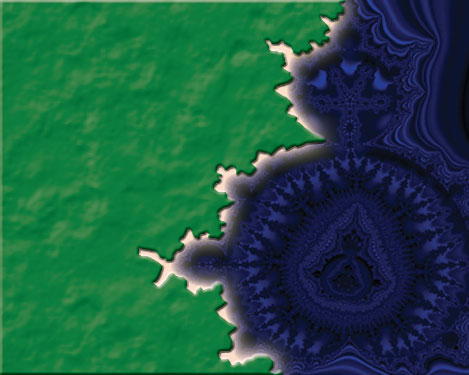
Unit 2
The Fractal Coastline and Dimension

| Download the printable version of this unit in .pdf format (You must have Adobe Acrobat Reader) | |
Sections:
2.2 - Dimension of "Non-Fractals"
2.4 - Dimensions and Logarithms
Atoms and molecules move randomly. Gas molecules rush around in all directions with different speeds, zigzag, turn, reverse direction. Disordered. Random. Unpredictable.
Sometimes molecules combine to form uneven structures: branching trees, scraggly nerve cells, patchy forests, jagged coastlines. Ragged. Unpredictable.
Other
times molecules combine to form structures that are ordered and
even: crystals, snowflakes, seashells. Orderly. Symmetric. Predictable.
|
What is science good for? For description! To tell us what is happening.
To describe the randomness in nature. For prediction! To tell us
what is going to happen. To predict the order that often grows from
randomness.
This site describes how probability and chance often shape structures around us: coastlines, nerve cells, termite tunnels, bacterial colonies, forests, root systems, river deltas, rough surfaces. These structures and processes may seem hopelessly unpredictable, but every single one has a design or behavior that can be described using the idea of a natural fractal. Natural fractal is a powerful idea used every day in scientific research. Every natural fractal is different from every other. No one has ever seen the patterns you will grow in the laboratory and by computer, because each pattern is unique. You will use fractals to investigate the dividing line between the known and the unknown.
Previous: Unit 1 - Introduction